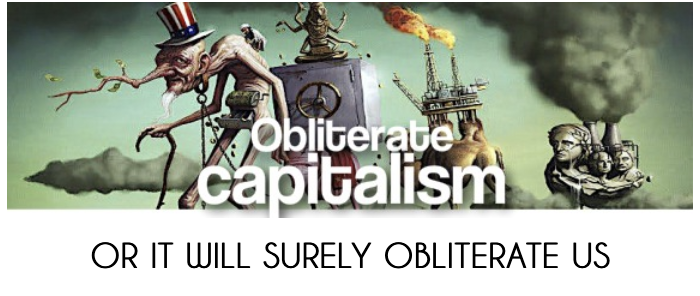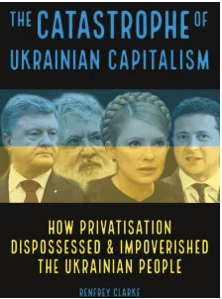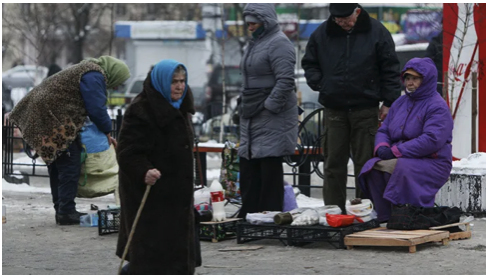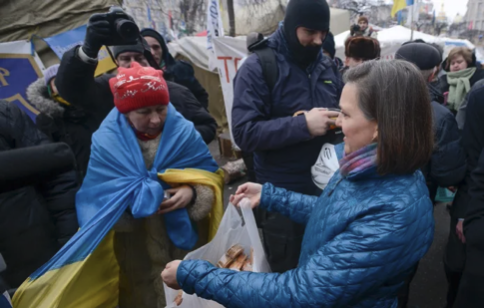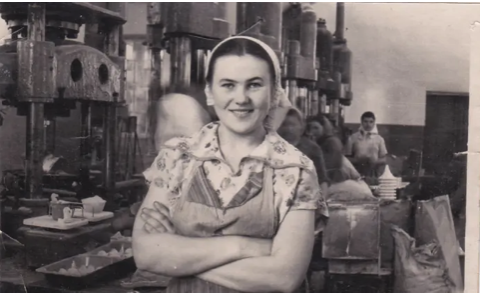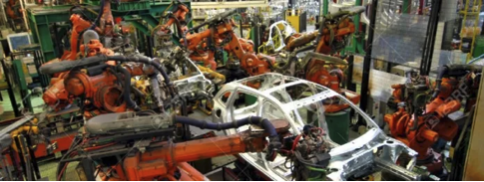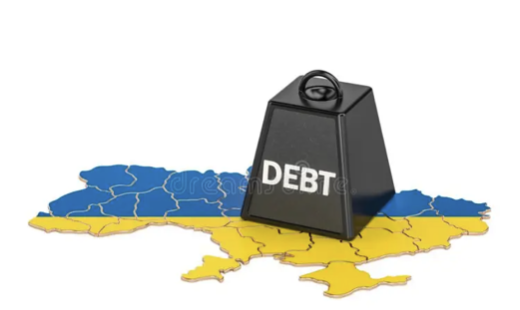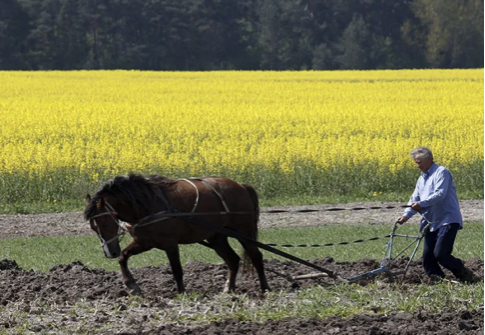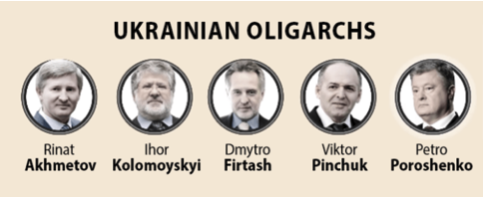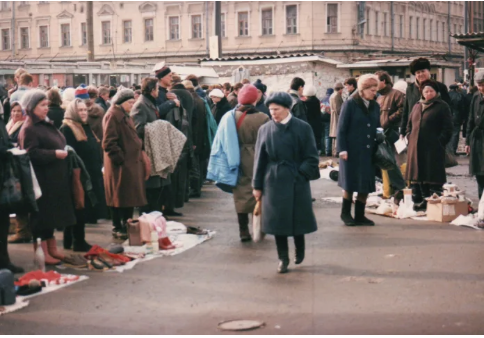Renfrey Clarke is an Australian journalist. Throughout the 1990s he reported from Moscow for Green Left Weekly of Sydney. This past year, he published The Catastrophe of Ukrainian Capitalism: How Privatisation Dispossessed & Impoverished the Ukrainian People with Resistance Books.
[Source: resistancebooks.com]
In April, I had an email exchange with Clarke. Below is the transcript.
Natylie Baldwin: You point out in the beginning of your book that Ukraine’s economy had significantly declined by 2018 from its position at the end of the Soviet era in 1990. Can you explain what Ukraine’s prospects looked like in 1990? And what did they look like just prior to Russia’s invasion?
Renfrey Clarke: In researching this book I found a 1992 Deutsche Bank study arguing that, of all the countries into which the USSR had just been divided, it was Ukraine that had the best prospects for success. To most Western observers at the time, that would have seemed indisputable.
Ukraine had been one of the most industrially developed parts of the Soviet Union. It was among the key centres of Soviet metallurgy, of the space industry and of aircraft production. It had some of the world’s richest farmland, and its population was well-educated even by Western European standards.
Add in privatisation and the free market, the assumption went, and within a few years Ukraine would be an economic powerhouse, its population enjoying first-world levels of prosperity.
Fast-forward to 2021, the last year before Russia’s “Special Military Operation,” and the picture in Ukraine was fundamentally different. The country had been drastically de-developed, with large, advanced industries (aerospace, car manufacturing, shipbuilding) essentially shut down.
World Bank figures show that in constant dollars, Ukraine’s 2021 Gross Domestic Product was down from the 1990 level by 38 per cent. If we use the most charitable measure, per capita GDP at Purchasing Price Parity, the decline was still 21 per cent. That last figure compares with a corresponding increase for the world as a whole of 75 per cent.
To make some specific international comparisons, in 2021 the per capita GDP of Ukraine was roughly equal to the figures for Paraguay, Guatemala and Indonesia.
What went wrong? Western analysts have tended to focus on the effects of holdovers from the Soviet era, and in more recent times, on the impacts of Russian policies and actions. My book takes these factors up, but it’s obvious to me that much deeper issues are involved.
In my view, the ultimate reasons for Ukraine’s catastrophe lie in the capitalist system itself, and especially, in the economic roles and functions that the “centre” of the developed capitalist world imposes on the system’s less-developed periphery.
Quite simply, for Ukraine to take the “capitalist road” was the wrong choice.
NB: It seems as though Ukraine went through a process similar to that in Russia in the 1990s, when a group of oligarchs emerged to control much of the country’s wealth and assets. Can you describe how that process occurred?
RC: As a social layer, the oligarchy in both Ukraine and Russia has its origins in the Soviet society of the later perestroika period, from about 1988. In my view, the oligarchy arose from the fusion of three more or less distinct currents that by the final perestroika years had all managed to accumulate significant private capital hoards. These currents were senior executives of large state firms; well-placed state figures, including politicians, bureaucrats, judges, and prosecutors; and lastly, the criminal underworld, the mafia.
A 1988 Law on Cooperatives allowed individuals to form and run small private firms. Many structures of this kind, only nominally cooperatives, were promptly set up by top executives of large state enterprises, who used them to stow funds that had been bled off illicitly from enterprise finances. By the time Ukraine became independent in 1991, many senior figures in state firms were substantial private capitalists as well.
The new owners of capital needed politicians to make laws in their favour, and bureaucrats to make administrative decisions that were to their advantage. The capitalists also needed judges to rule in their favour when there were disputes, and prosecutors to turn a blind eye when, as happened routinely, the entrepreneurs functioned outside the law. To perform all these services, the politicians and officials charged bribes, which allowed them to amass their own capital and, in many cases, to found their own businesses.
Finally, there were the criminal networks that had always operated within Soviet society, but that now found their prospects multiplied. In the last years of the USSR, the rule of law became weak or non-existent. This created huge opportunities not just for theft and fraud, but also for criminal stand-over men. If you were a business operator and needed a contract enforced, the way you did it was by hiring a group of “young men with thick necks.”
Ukrainians protest corruption in their government. [Source: washingtonpost.com]
To stay in business, private firms needed their “roof,” the protection racketeers who would defend them against rival shake-down artists—for an outsized share of the enterprise profits. At times the “roof” would be provided by the police themselves, for an appropriate payment.
This criminal activity produced nothing, and stifled productive investment. But it was enormously lucrative, and gave a start to more than a few post-Soviet business empires. The steel magnate Rinat Akhmetov, for many years Ukraine’s richest oligarch, was a miner’s son who began his career as a lieutenant to a Donetsk crime boss.
Within a few years from the late 1980s, the various streams of corrupt and criminal activity began merging into oligarchic clans centred on particular cities and economic sectors. When state enterprises began to be privatised in the 1990s, it was these clans that generally wound up with the assets.
I should say something about the business culture that arose from the last Soviet years, and that in Ukraine today remains sharply different from anything in the West. Few of the new business chiefs knew much about how capitalism was supposed to work, and the lessons in the business-school texts were mostly useless in any case.
The way you got rich was by paying bribes to tap into state revenues, or by cornering and liquidating value that had been created in the Soviet past. Asset ownership was exceedingly insecure—you never knew when you’d turn up at your office to find it full of the armed security guards of a business rival, who’d bribed a judge to permit a takeover. In these circumstances, productive investment was irrational behaviour.
NB: I’ve heard that one source of opposition to political decentralisation—which would appear to have been a possible solution to Ukraine’s divisions before the war—is that centralisation benefits the oligarchs. Do you think that’s true?
RC: There’s no simple answer here. Politically and administratively, Ukraine since independence has been a relatively centralised state. Provincial governors aren’t elected but are appointed from Kyiv. This has reflected fears in Kyiv of separatist trends arising in the regions. Here, obviously, we should have in mind the Donbas.
Despite being centralised, the Ukrainian state machine is quite weak. A great deal of real power lies with the regionally based oligarchic clans. Unlike the situation in Russia and Belarus, no single individual or oligarchic grouping has been able to achieve unrivalled dominance and curtail the power of the chronically warring business magnates. Ukraine has never had its Putin or Lukashenko.
The system in Ukraine can thus be described as a highly fluid oligarchic pluralism, with control over the government in Kyiv shifting periodically between unstable groupings of individuals and clans. On the whole, the oligarchs over the decades seem to have been content with this, since it has prevented the rise of a central authority able to discipline them and cut into their prerogatives.
NB: You discuss how the enforced economic separation between Ukraine and Russia has been detrimental to the Ukrainian economy. Can you explain why?
RC: Under Soviet central planning Russia and Ukraine formed a single economic expanse, and enterprises were often tightly integrated with customers and suppliers in the other republic. Indeed, Soviet planning had often provided for only one supplier of a particular good in a whole swathe of the USSR, meaning that cross-border trade was essential if whole chains of production were not to break down.
Understandably, Russia remained by far Ukraine’s largest trading partner throughout the first decades of Ukrainian independence. Despite problems such as erratic currency exchange rates, this trade had compelling advantages. Customs barriers were absent, and technical standards, inherited from the USSR, were mostly identical. Ways of doing business were familiar, and negotiations could be conducted conveniently in Russian.
Perhaps most critically important was another factor: The two countries were on broadly similar levels of technological development. Their labour productivity did not differ by much. Neither side was in danger of seeing whole industrial sectors wiped out by more sophisticated competitors based in the other country.
Nevertheless, one of the truisms of liberal discourse, both in Ukraine and in Western commentaries, was that the close economic ties with Russia were holding Ukraine back. There was said to be an urgent need for Ukraine to turn its back on Russia, identified with the Soviet past, and to open itself up to the West. Ukraine’s commerce with Russia, in this scenario, needed to be replaced by “deep and comprehensive free trade” with the European Union.
This controversy had wide-ranging ideological, political and even military ramifications. But to be brief, by 2014, opposition within Ukraine had been overcome and an Association Agreement with the EU had been signed. By 2016 trade between Ukraine and Russia had shrunk dramatically, to the point where it was much less than commerce with the EU.
The shift to integration with the West, however, did not bring Ukraine the promised surge of economic growth. After a severe slump in the aftermath of the Maidan events of 2014, Ukrainian GDP saw only a weak recovery between 2016 and 2021. Meanwhile, the country’s trade balance with the EU remained strongly negative. Integration with the West was doing far more for the West than for Ukraine.
NB: You made an interesting comment about pro-Western liberals in both Russia and Ukraine (including Maidan protesters/supporters): “Like their counterparts in Russia, the members of these ‘Westernising’ middle layers tend to be naïve about the realities of Western society, and about what incorporation into developed-world economic structures means in practice for countries whose economies are far poorer and more primitive.” (p. 9) Can you describe the actual effect of the policies that resulted from Maidan and the signing of the EU Association Agreement? It sounds like a case of “be careful what you wish for.”
RC: If you want to break the hearts of Ukraine’s liberal intelligentsia, just remind them that economic growth in the European Union is stagnant, and European societies crisis-ridden.
Ukraine now has an economic integration agreement with the EU, allowing for extensive areas of free trade. But Ukraine isn’t being integrated into European capitalism as part of the high-productivity, high-wage “core” of the system. After all, why would EU countries want to give themselves an extra competitor?
Instead, the role Ukraine has been assigned is that of a market for advanced Western manufactures, and of a supplier to the EU of relatively low-tech generic goods such as steel billets and basic chemicals. These are low-profit commodities that Western producers are tending to move out of in any case, especially since the industries concerned can be highly polluting.
In Soviet times, as I’ve explained, Ukraine was a centre of sophisticated, at times world-class, manufacturing. But in the mayhem surrounding privatisation, investment levels collapsed, innovation virtually ceased, and products became uncompetitive in developed-world markets. In the dreams of liberal theorists, foreign capitalists had been going to troop over the border, buy up ruined industrial enterprises, re-equip them and on the basis of low wages, make attractive profits from exports to the West. But Ukraine had a criminalised economy run by oligarchs. Rather than swim with sharks, potential foreign investors opted overwhelmingly to stay away.
The dropping of EU import tariffs was predicted to turn this situation around, by making the attractions of investment in Ukraine irresistible for Western capital. Meanwhile, the foreign investors were supposed to out-compete the oligarchs, and force reforms on the corrupt, business-unfriendly state machine.
But none of this has really happened. Foreign investment has remained tiny. At the same time, free trade with the EU has meant that Western manufacturers, with higher productivity and a more attractive range of offerings, have been able to take over large parts of the Ukrainian domestic market and drive local producers out of business.
As an example, I could cite the Ukrainian car industry. In 2008 the country produced more than 400,000 motor vehicles. The last important year of production was 2014. Then in 2018 a reduction of tariffs brought a huge increase in imports of used cars from the EU, and output of passenger cars in Ukraine effectively ceased.
NB: On a related note, I can’t help but observe that Ukraine seems to have fallen victim to neoliberal corporatist policies that benefit more powerful outside powers—the kind of policies that used to be criticised and opposed by the anti-globalisation movement of the 1990s. The left used to recognise these economic policies, when they were imposed on weaker countries, as a form of neocolonialism. Now it seems like the left—at least in the U.S.—has been reduced to a frightened waif obsessing over a caricaturised form of identity politics and regurgitating the latest war propaganda. What, in your opinion, has happened to the left?
RC: In my view, most sections of the Western left have failed to come up with an adequate response to the war in Ukraine. Fundamentally, I see the problem as rooted in an adaptation to liberal attitudes and habits of thought, and in a failure to educate a whole generation of activists in the distinctive traditions, including the intellectual traditions, of the class struggle movement.
Today, numerous members of the left simply lack the methodological equipment to understand the Ukraine issue—which is, to be fair, fiendishly complex. Here I’d make two points. First, it’s critically important for the left to reach a clear understanding of whether present-day Russia is, or is not, an imperialist power. Second, in addressing this question, there’s no way the left should allow itself to rest on the thinking of The Guardian and The Washington Post. Our methodology has to come from the tradition of left thinkers such as Luxemburg, Lenin, Bukharin and Lukács.
The liberal empiricism of The Guardian will tell you that Russia is an imperialist power, as “proved” by the fact that Russia has invaded and occupied the territory of another country. But even in recent decades, various countries that are manifestly poor and backward have done precisely this. Does this mean we should be talking about “Moroccan imperialism” or “Iraqi imperialism”? That’s absurd.
In the classic left analysis, modern imperialism is a quality of the most advanced and wealthy capitalism. Imperialist countries export capital on a massive scale, and drain the developing world of value through the mechanism of unequal exchange. Here Russia simply doesn’t fit the bill. With its relatively backward economy based on the export of raw commodities, Russia is a large-scale victim of unequal exchange.
For the left, joining with imperialism in attacking one of imperialism’s victims should be unthinkable. But that’s what many leftists are now doing.
Since the early 1990s, NATO has expanded from central Germany right to Russia’s borders. Ukraine has been recruited as a de facto member of the Western camp, and has been equipped with a large, well-armed, NATO-trained army. Imperialist threats and pressures against Russia have multiplied.
Imperialism has to be resisted. But does this mean that the left should support Putin’s actions in Ukraine? Here we should reflect that a workers’ government in Russia would have countered imperialism in the first instance through a quite different strategy, centred on international working-class solidarity and revolutionary anti-war agitation.
Obviously, that’s a course Putin will never follow. But does Russia’s decision to resist imperialism through methods that aren’t ours mean we should denounce the very fact of Russian resistance?
Again, that’s unthinkable. We have to stand with Russia against the attacks on it by imperialism and by the Ukrainian ruling class. Of course, Putin’s politics aren’t ours, so our support for the Russian cause must be critical and nuanced. We’re under no obligation to support specific policies and actions of Russia’s capitalist elite.
That said, the left-liberal position, of seeking victory for imperialism and its allies in Ukraine, is deeply reactionary. Ultimately, it can only multiply suffering through emboldening the U.S. and NATO to launch assaults in other parts of the world.
NB: The war has also been a disaster for Ukraine economically. In October last year Andrea Peters wrote an in-depth article on how poverty had sky-rocketed in the country since the invasion. Some figures she cited included:
*10-fold increase in poverty
*35% unemployment rate
*50% reduction in salaries
*public debt of 85% of GDP
I’m sure it’s even worse now. It appears that the U.S./Europe are almost completely subsidising the Ukrainian government at this point. Can you talk about what you know of Ukraine’s current economic conditions?
RC: Ukraine’s economy has been shattered by the war. Government figures show GDP in the last quarter of 2022 down by 34% on the level a year earlier, and industrial production in September down by a similar amount. In March this year the cost of direct damage to buildings and infrastructure was put at $135 billion, and more than 7 per cent of housing has reportedly been damaged or destroyed. Huge areas of cropland have not been sown, often because fields have been mined.
The military draft has taken large numbers of skilled workers from their jobs. Other highly qualified people are among the Ukrainians, reportedly at least 5.5 million, who have left the country. An estimated 6.9 million people have been displaced within Ukraine, and this has also affected production.
According to Finance Minister Serhii Marchenko, just one-third of Ukraine’s budget revenue now comes from domestic sources. The difference is having to be made up by foreign loans and grants. This aid has been enough to keep annual inflation at a relatively manageable level of about 25 per cent, but workers are rarely being compensated for price rises, and their living standards have collapsed.
In many cases, the Western aid is not in the form of grants but of loans. By my calculation, Ukraine’s external debt in January was about 95 percent of annual GDP. When and if peace returns, Ukraine will have to sacrifice its foreign exchange earnings over decades to pay back these borrowings.
NB: Ukraine’s PM Denys Shmyhal has stated that for 2023 alone Ukraine will need $38 billion to cover the budget deficit and another $17 billion for “rapid reconstruction projects.” It would seem that it’s not sustainable (politically or economically) for the West to provide this kind of money for any length of time. What do you think?
RC: The figure I have for total planned U.S. military spending in 2023 is $886 billion, so the NATO countries can afford to maintain and rebuild Ukraine if they want to. The fact that they’re keeping the Ukrainian economy on a relative drip-feed—and worse, demanding that many of the outlays be paid back—is a conscious choice they’ve made.
There’s a lesson in this for developing-world elites that are tempted to act as proxies for imperialism, in the way that Ukraine’s post-2014 leaders have deliberately done. When the consequences get you in deep, don’t expect the imperialists to pick up the tab. Ultimately, they’re not on your side.
NB: The Oakland Institute published a report in February of this year about a specific aspect of the Western-influenced neoliberal policies on Ukraine—agricultural land. One of the first things Zelensky did after he took office in 2019 was to force through an unpopular land reform bill. Can you explain what this law was about and why it was so unpopular?
RC: By 2014 Ukraine’s farmland had almost all been privatised and distributed among millions of former collective farm workers. Until 2021 a moratorium remained on sales of agricultural land. This moratorium was overwhelmingly popular among the rural population, who distrusted the land-office bureaucracy and feared being swindled of their holdings. With only small acreages, and lacking capital to develop their operations, most landowners opted to lease their holdings and to work as employees of commercial farming enterprises.
The result has been described as a “re-feudalisation of Ukrainian agriculture.” Entrepreneurs with access to capital, often established oligarchs but including U.S. and Saudi corporate interests, amassed control of vast lease holdings. With land rents cheap, and wages minimal, the new land barons had little reason to invest in raising productivity, which remained low despite the rich soil.
To this situation, already deeply retrograde, the International Monetary Fund and other institutional lenders brought the wisdom of neoliberal dogma. For many years, structural adjustment programs attached to IMF loans had insisted on the creation of a free market in agricultural land. Ukrainian governments, aware of the massive hostility to the move, had dragged their feet. It was Zelensky whose resistance finally broke. Since mid-2021 Ukrainian citizens have been able to purchase up to 100 hectares of agricultural land, with the figure to rise to 10,000 hectares from January 2024.
In theory, large numbers of small landowners will now sell their land, move to the cities, and take up life as urban workers, while rising land values will force commercial farmers to invest in raising their productivity. But these calculations are almost certainly utopian. Unemployment in the cities is already high, and housing tight. Small farmers are unlikely to risk mortgaging their land to improve their operations while profits remain slender, interest rates high, the banks predatory, and officials corrupt at every level.
The real logic of this “reform” is to strengthen the hold on agriculture of the oligarchs and international agribusiness.
NB: The World Bank recently came out with a report stating that reconstruction after the war ends will cost at least $411 billion. When the fighting ends, what kind of policies do you think would give Ukraine the best chance at building a more stable and equitable economy in the long term?
RC: How is the fighting to end? At present, the Russian forces seem unlikely to be defeated, at least by the Ukrainians. Meanwhile, the closer a Russian victory, the greater the prospect of full-scale imperialist military intervention.
Suppose, though, that Zelensky were to sit down with Russian negotiators and hammer out a peace deal. Realistically, this would require a recognition by Ukraine that the Donbas and Crimea had been lost, along with Zaporizhzhia and Kherson provinces. Neofascists would have to be purged from the state apparatus, and their organisations outlawed. Ukraine would need to break its ties with NATO, and its armed forces would have to be cut to a level the country could afford.
If such a deal were reached, of course, Ukrainian ultra-nationalists would line up to assassinate Zelensky. If, that is, the CIA didn’t get him first.
Presuming there can be an “after the war,” what might it look like? We must remember that Ukraine is now one of the poorer parts of the capitalist developing world. For countries in this general situation, there can be no genuinely “stable and equitable” economic future. Such a future is conceivable only outside capitalism, its crises, and its international system of plunder.
But let’s suppose that an independent Ukraine were somehow to emerge, that it was at peace, and that it was able to pursue some kind of rational economic course. In the first place, this course would involve a careful demarcation of the economy from the advanced West. Ideally, Ukraine would still have extensive trade with the EU. But this could not be at the cost of allowing unrestricted imports to stifle industries and sectors that had the potential to reach modern levels of sophistication and productivity.
Ukraine’s trading relations need to be based primarily on exchanges with states that share the country’s general level of technological development, so that commercial competition promises stimulus and not annihilation. This shift would involve the re-establishing of a dense network of economic relations with Russia. It would also feature an expansion of already extensive (in 2021) trade with states such as Turkey, Egypt, India and China.
In politico-economic terms, Ukraine’s future doesn’t lie in “integration with the West”—a destructive fantasy—but in the country taking its place among the member states of organisations such as BRICS, the Belt and Road initiative, and the Shanghai Cooperation Organisation. For its financing needs, Ukraine needs to repudiate the IMF and look to bodies such as the Asian Infrastructure Investment Bank.
Those are necessary changes, and would greatly improve Ukraine’s prospects. But ultimately, a “stable and equitable” future needs much deeper transformations. It will require ousting the country’s crime lord oligarchs from control over the economy.
In some thirty years, and despite Western aid, Ukraine’s liberal reformers have made little progress on this front. The “middle layers” of the country’s society are simply not able or inclined to carry out such an overthrow. They have little social weight, and are not an independent force. Those of them who don’t work directly for the oligarchs are enmeshed, in many cases, in the corrupt state machine that the oligarchs control.
[Source: euromaidanpress.com]
The only social force in Ukraine that has the massive numbers to end oligarchic power is the organised proletariat. Unlike the “middle layers,” the country’s workers have no stake in preserving oligarchism, and have the potential to act independently of it.
NB: You reported from Moscow in the 1990s for the newspaper Green Left. How did that come about, and what stands out to you most about your time in Russia?
RC: As a Russian speaker, I was sent by the paper in 1990 to Moscow—then the capital of the USSR—to report on the progress of perestroika. I was expecting to be there for about two years, but acquired a Russian family and stayed for nine.
I had only a small income from the paper. My wife and I lived better than the neighbors, but not by much. I watched and reported as highly qualified workers were plunged into destitution. Their wages unpaid, their savings of decades erased by inflation, they sold household belongings outside metro stations, and lived on potatoes dug from their garden plots.
Street flea market in Rostov-on-Don in 1992. [Source: wikipedia.org]
The eeriest experience was watching people try to cope with a drastic inversion of beliefs and values. Wherever Soviet society had put a minus, Russians were abruptly commanded to put a plus. Behaviour that had earlier been regarded as contemptible—hustling, speculating—now won praise in the media.
Among the people I knew, I suspect the most traumatised were Western-oriented intellectuals who for years had longed for the Soviet Union to perish, and for capitalism to replace it. Now capitalism had come—and it was a nightmare.
In these circumstances more than a few Russians lost their moral bearings completely. Anything seemed permitted. I remember setting out one morning to take my little boy to his day care. On the pavement not far from our building, we encountered a freshly murdered corpse.
Meanwhile, a tornado of history swirled round about. As a journalist I was in the “Russian White House,” the parliament building up the Moscow River from the Kremlin, during the coups of 1991 and 1993. In 1998 I reported as the government effectively declared itself bankrupt, defaulting on its debt obligations. By that time, 40 per cent of the economy had evaporated.
I remember those years, though, as in some ways the richest and most rewarding of my life.

CovertAction Magazine is made possible by subscriptions, ordersand donations from readers like you.
Blow the Whistle on U.S. Imperialism
Click the whistle and donate
 Natylie Baldwin is the author of The View from Moscow: Understanding Russia and U.S.-Russia Relations. Her writing has appeared in various publications including The Grayzone, The Greanville Post, Consortium News, RT, OpEd News, The Globe Post, Antiwar.com, The New York Journal of Books, and Dissident Voice. Natylie can be reached at natyliesb@gmail.com.
Natylie Baldwin is the author of The View from Moscow: Understanding Russia and U.S.-Russia Relations. Her writing has appeared in various publications including The Grayzone, The Greanville Post, Consortium News, RT, OpEd News, The Globe Post, Antiwar.com, The New York Journal of Books, and Dissident Voice. Natylie can be reached at natyliesb@gmail.com. Print this article

Unfortunately, most people take this site for granted.
DONATIONS HAVE ALMOST DRIED UP...
PLEASE send what you can today!
JUST USE THE BUTTON BELOW

[premium_newsticker id=”211406″]
![]() This work is licensed under a Creative Commons Attribution-NonCommercial 4.0 International License
This work is licensed under a Creative Commons Attribution-NonCommercial 4.0 International License
ALL CAPTIONS AND PULL QUOTES BY THE EDITORS NOT THE AUTHORS



